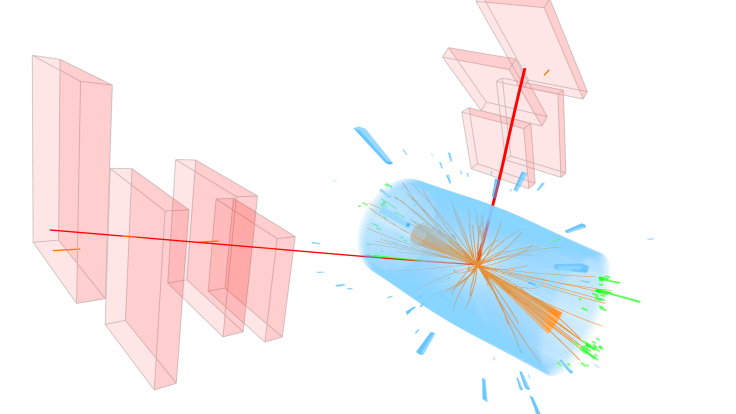Fundamental particles are objects that are so small, they have no deeper internal structure.
There are about a dozen “matter” particles that scientists think are fundamental, and they come in a variety of sizes. For instance, the difference between the masses of the top quark and the electron is equivalent to the difference between the masses of an adult elephant and a mosquito.
Still, all of these masses are extremely tiny compared to what’s physically possible. The known laws of physics allow for fundamental particles with masses approaching the “Planck mass”: a whopping 22 micrograms, or about the mass of a human eyelash. To go back to our comparisons with currently known particles, if the top quark had the same mass as an elephant, then a fundamental particle at the Planck mass would weigh as much as the moon.
Could such a particle exist? According to CERN Theory Fellow Dorota Grabowska, scientists aren’t completely sure.
“Particles with a mass below the Planck scale can be elementary,” Grabowska says. “Above that scale, maybe not. But we don’t know.”
Scientists at particle accelerators such as the Large Hadron Collider at CERN are always on the look-out for undiscovered massive particles that could fill in the gaps of their models. Finding new particles is so important that the global physics community is discussing building larger colliders that could produce even more massive particles. US involvement in the LHC is supported by the US Department of Energy’s Office of Science and the National Science Foundation.
If scientists found a fundamental particle with a mass above the Planck scale, they would need to revisit how they think about particle sizes. For the kind of research performed at the LHC, fundamental particles are all considered to be the same size—no size at all.
“When we think about the pure mathematics, elementary particles are, by definition, point-like,” Grabowska says. “They don’t have a size.”
Treating fundamental particles as points works well in particle physics because their masses are so small that gravity, which would have an effect on more massive objects, is not really a factor. It’s kind of like how truck drivers planning a trip don’t need to consider the effects of special relativity and time dilation. These effects are there, at some level, but they don’t have a noticeable impact on drive time.
But a fundamental particle above the Planck scale would sit at the threshold between two divergent mathematical models. Quantum mechanics describes objects that are very tiny, and general relativity describes objects that are very massive. But to describe a particle that is both very tiny and very massive, scientists need a new theory called quantum gravity.
Mathematically, physicists could no longer consider such a massive particle as a volume-less point. Instead, they would need to think about it behaving more like a wave.
The particle-wave duality concept was born about 100 years ago and states that subatomic particles have both particle-like and wave-like properties. When scientists think about an electron as a particle, they consider that it has no physical volume. But when they think about it as a wave, it extends throughout all the space it’s granted, such as the orbit around the nucleus of an atom. Both interpretations are correct, and scientists typically use the one that best suits their area of research.
The mass-to-radius ratio of these waves is important because it determines how they feel the effects of gravity. A super massive particle with tons of room to roam would barely feel the force of gravity. But if that same particle were confined to an extremely small space, it could collapse into a miniature black hole. Scientists at the LHC have searched for such tiny black holes—which would evaporate almost immediately—but so far have come up empty-handed.
According to Grabowska, quantum gravity is tricky because there is no way to experimentally test it with today’s existing technology. “We would need a collider 14 orders of magnitude more energetic than the LHC,” she says.
But thinking about the implications of finding such a particle helps theorists push the known laws of physics.
“Our model of particle physics breaks down when pushed to certain scales,” says Netta Engelhardt, a quantum gravity theorist at the Massachusetts Institute of Technology. “But that doesn’t mean that our universe doesn’t feature these regimes. If we want to understand massive objects at tiny scales, we need a model of quantum gravity.”













